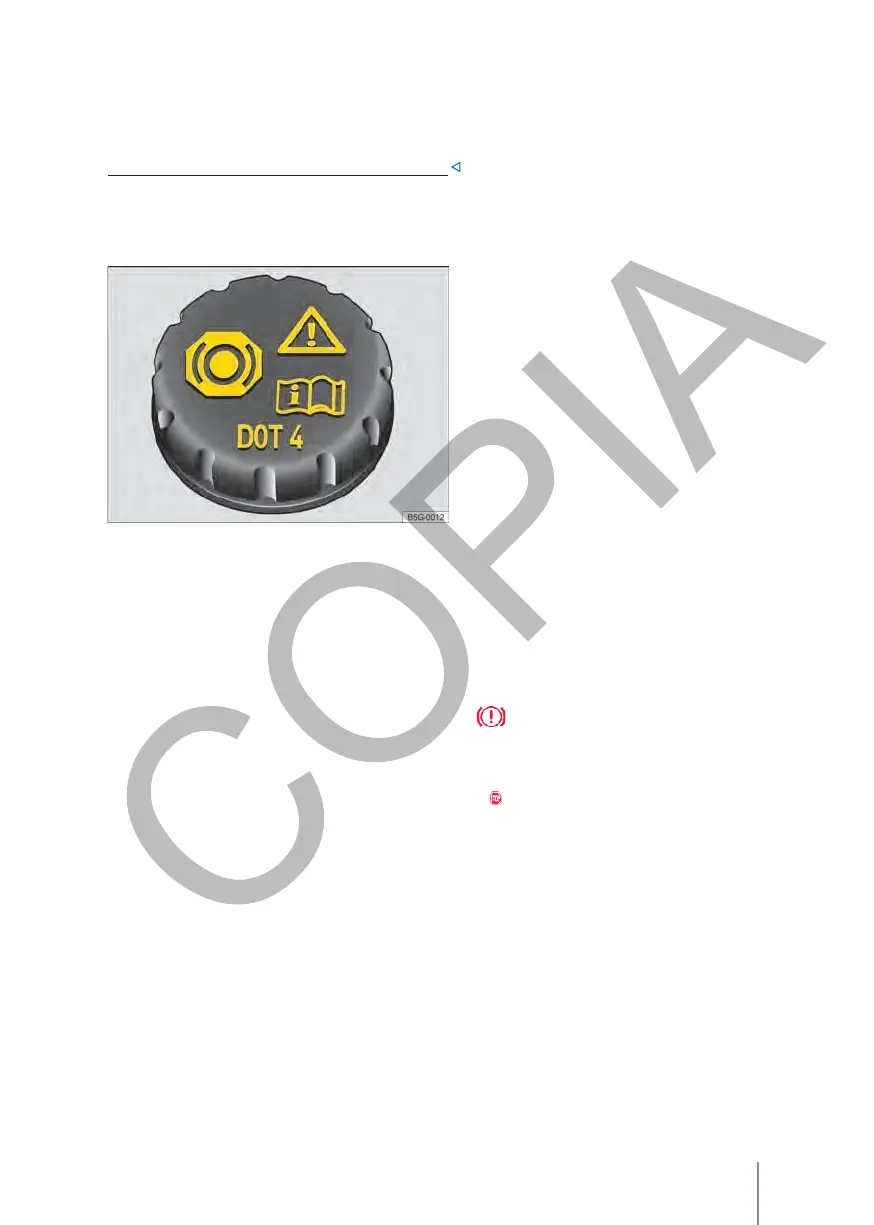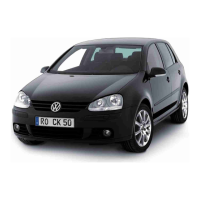•
Do not add coolant if the expansion tank is
completely empty! Air may have entered the
cooling system. No
Continue driving and ask for assistance from
qualified personnel, otherwise the engine could
be damaged!
Brake fluid
Fig. 177 In the engine compartment: brake fluid
reservoir cap.
Brake fluid absorbs moisture from the air over
time. Excessive water content in the brake fluid
causes damage to the brake system. The boiling
point of the brake fluid is significantly reduced by
the effect of water. If the water content in the
brake fluid is too high, vapour bubbles can form in
the brake system if the brakes are subjected to
high stresses.
or in the event of heavy braking. Bubbles reduce the
braking power, considerably increase the braking
distance and can even lead to the failure of the
entire brake system. The safety of yourself and
other road users depends on the correct
functioning of the braking system at all times → p.
252.
Brake fluid specifications
Volkswagen has developed a special brake fluid
optimised for the vehicle's brake system. To ensure
optimum function of the brake system, Volkswagen
expressly recommends using brake fluid in
accordance with VW 501 14. .
Before using a brake fluid, it shall be checked
whether the specifications of the brake fluid, as
stated on the container, meet the requirements of
the vehicle.
Brake fluid complying with VW standard 501 14 is
available from Volkswagen dealers.
If such a brake fluid is not available and a different
high quality brake fluid has to be used, a brake
fluid that meets the requirements of DIN ISO 4925
or the US standard can be used.
FMVSS 116 DOT 4 CLASS 6.
Not all brake fluids that meet the requirements of
DIN ISO 4925 or the US standard FMVSS 116 DOT 4
CLASS 6 have the same chemical composition. Some
of these brake fluids may contain chemicals which,
over time, can destroy or damage parts of the
vehicle's brake system.
Volkswagen therefore recommends the use of brake
fluid that complies exactly with VW 501 14 in order
to ensure that the brake system functions correctly
in the long term.
Brake fluids in accordance with VW 501 14
meet the requirements of DIN ISO 4925 or
the US standard FMVSS 116 DOT 4 CLASS 6.
Brake fluid level
The brake fluid level must always be between the
MIN and MAX marks on the brake fluid reservoir
→ p. 252.
It is not always possible to check the brake fluid
level exactly, as on some models a cap or engine
components prevent the level in the brake fluid
reservoir from being visible. If you cannot see the
exact brake fluid level, seek the assistance of
qualified personnel.
The brake fluid level decreases slightly during
driving due to brake pad wear and automatic brake
readjustment.
Brake fluid level
The control lamp lights up red.
Brake fluid level is too low.
—
Do not continue the march!
—
Check the brake fluid level.
If the brake fluid level is too low:
—
Inform a specialised workshop.
—
Have the brake system checked.
Change brake fluid
Have the brake fluid changed by a specialist
workshop. Volkswagen recommends a Volkswagen
dealer for this. Always have new brake fluid filled
that meets the required specifications.

